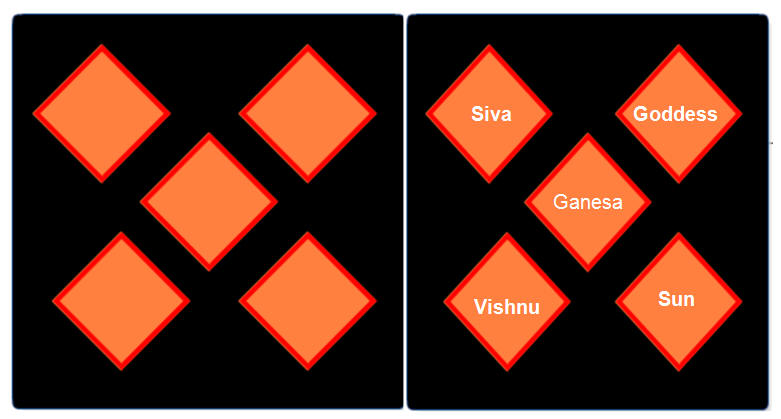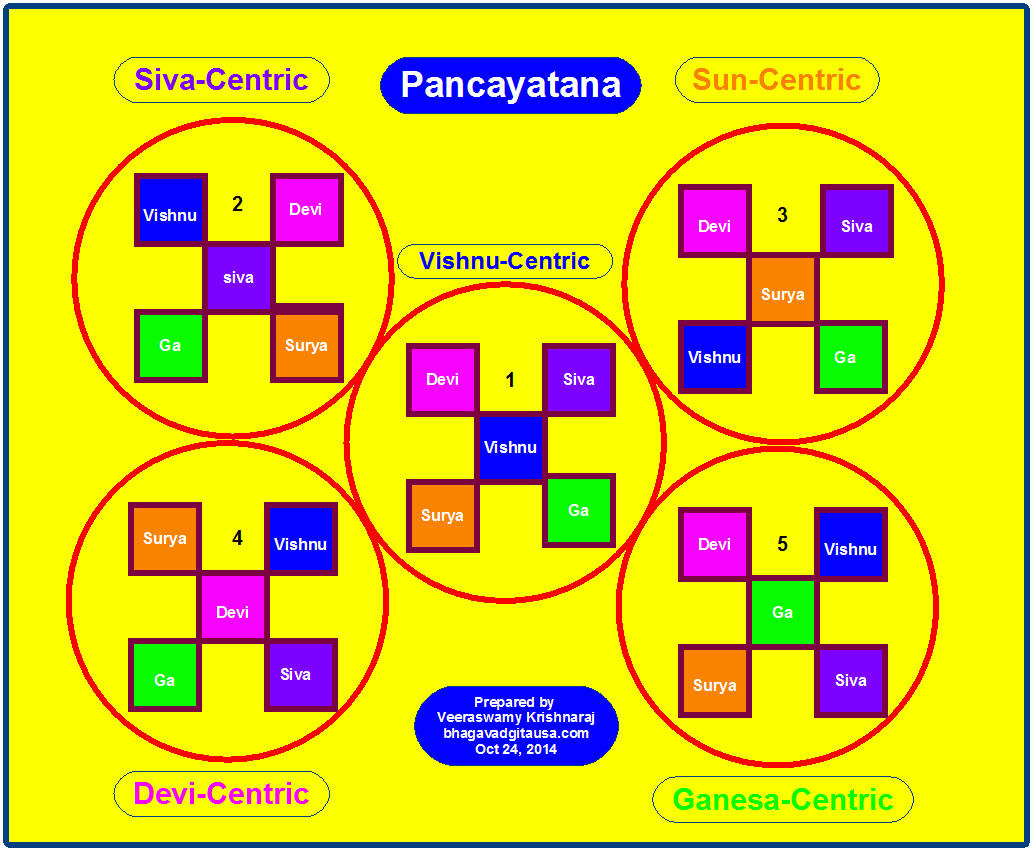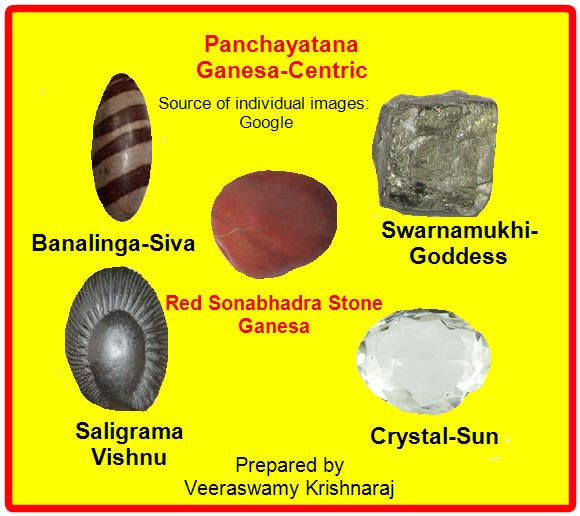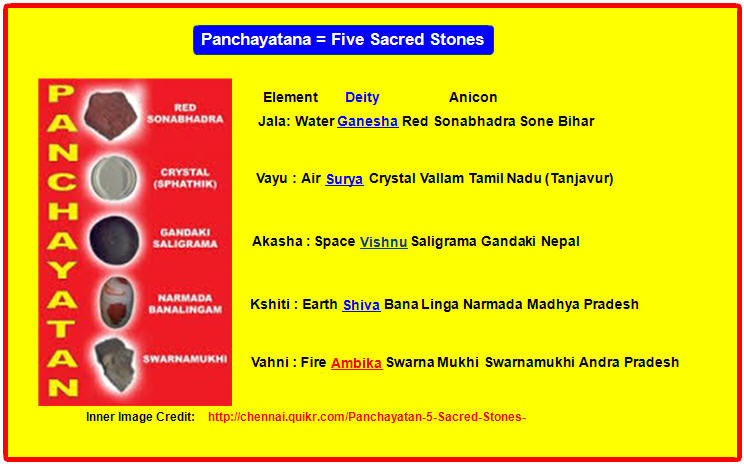There are two forms of worship: Temple worship and home worship.
The temple deity is installed, consecrated and fixed in the temple. The
idol or image is awakened with Prana Pratishṭhā
ceremony (establishment of breath or life in the idol, recitation of
hymns and Mantras and the opening of the eyes). It is the descent of the
divine in the idol.
The temple deity is Acaram (Mūlavar) meaning he is immobile and fixed to the sanctum. The replica of the Mūlavar is the Uṟcavar, who goes on procession.
Pañćāyatana
Puja is worshipping of five deities at home: Sun, Devi, Vishnu, Siva,
Ganesa or Skanda. Ishta Devata = personal god: Gaṇeśa,
Skanda... Pañćāyatana,
popularized by Adi Sankara was in vogue long before his time.
These five deities can be icons or anicons, usually earth
elements.
These five entities are one manifest personal god with five forms: The
Saguṇa
Brahman (Personal god with form: Brahman or the Absolute with qualities).
Worshipping Saguṇa
Brahman with form is the step towards realization of Parabrahman
(Supreme Brahman) without
form.
Individual worshipper places his god of preference (Ishta Devata) in the
center and the other four in four corners. The central deity according
to one's preference could be Siva, Vishnu, Ganesa, sun or Goddess.



